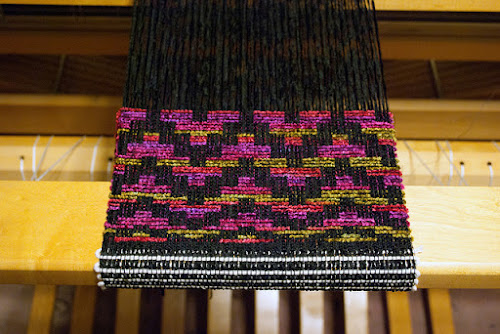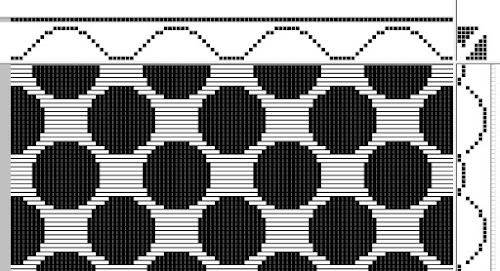(This blog post was originally published May 24, 2012 on my first blog site, which is no longer in existence.)
Now it can be revealed! (Well, I don’t know how much of a secret this really was, but I was waiting until the actual magazine was published before I blogged about it.) I have a project published in the (latest) May/June 2012 issue of Handwoven magazine!
My project is the Houndstooth Scarf in Diversified Plain Weave, and I gotta say that the whole process was both scary and exciting.
It started in January when I wove my first Diversified Plain Weave scarf (DPW for short) and blogged about it. Picture below. The editor of Handwoven noticed my blog piece and sent me a very nice email asking if I would like to do a project for the May/June issue, which was about DPW, among other techniques. I answered, “Yes (gulp)!”
I had an idea for a six-block houndstooth profile draft in DPW. (BTW, there aren’t a lot of six-block houndstooth patterns out there, so I kind of had to figure it out for myself.) So I worked it out and wove a prototype, pictured below.
The yarns I used were just some chenille and cotton that I’d had in my stash for years quite a long time. Brand X chenille Mill end chenille and 40/3 cotton. I needed some main stream standard size yarns to do a magazine project, so I ordered 1450 ypp chenille and found some 20/2 cotton, and I was off and running.
The project was due in the third week of February and I was weaving right up to the last minute. I even took a half day off work to do the last minute finishing on the piece and get it ready to mail, along with the Project-at-a-Glance information sheet and the print outs of the pattern file and profile draft. When you are weaving for publication, every detail has to be just right, and I was feeling the pressure.
The project looks great in the magazine, I must say. Here is a sneak peak if you haven’t seen it already:
And, here is the profile draft for the six-block houndstooth pattern:
Enjoy!











